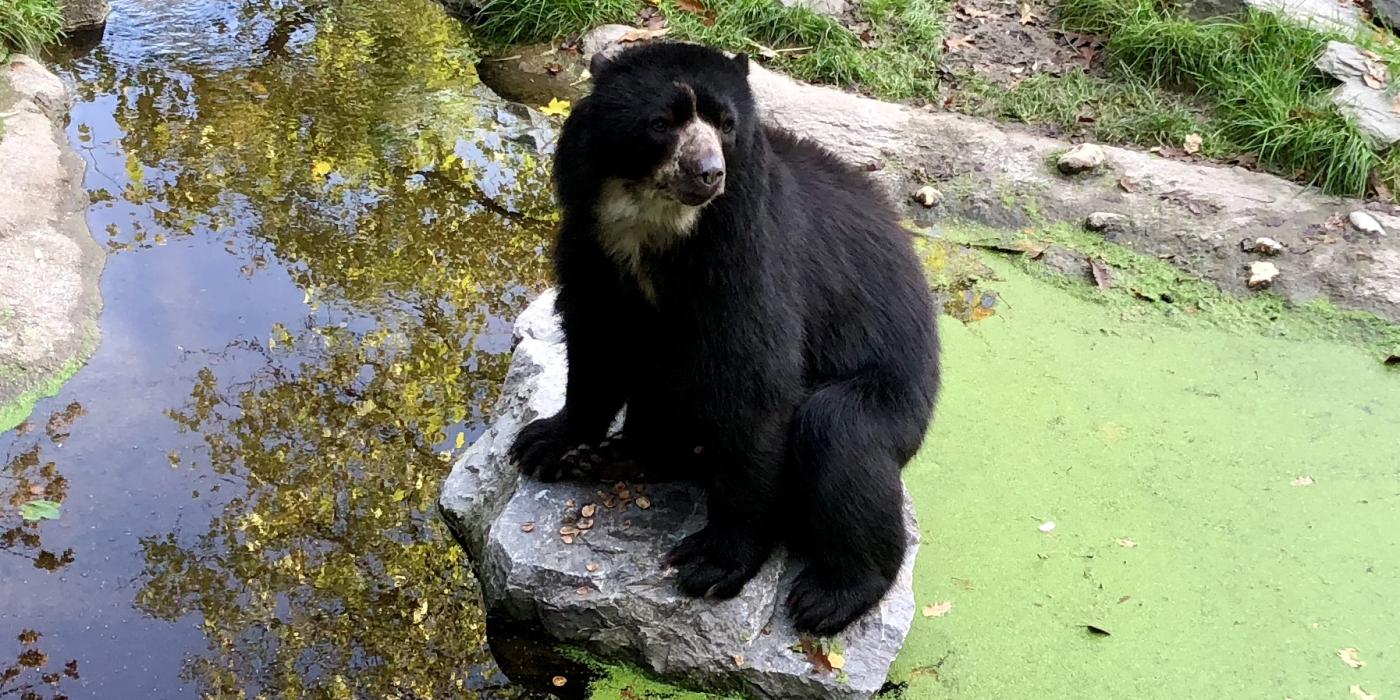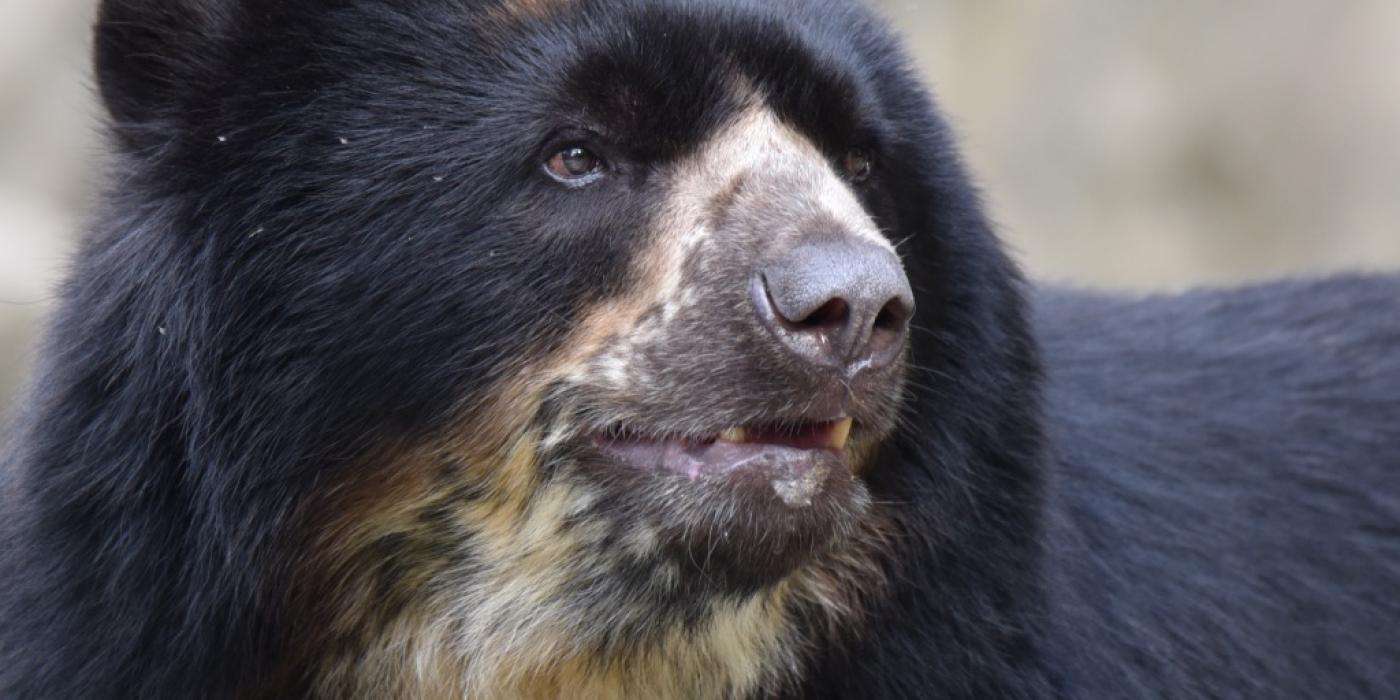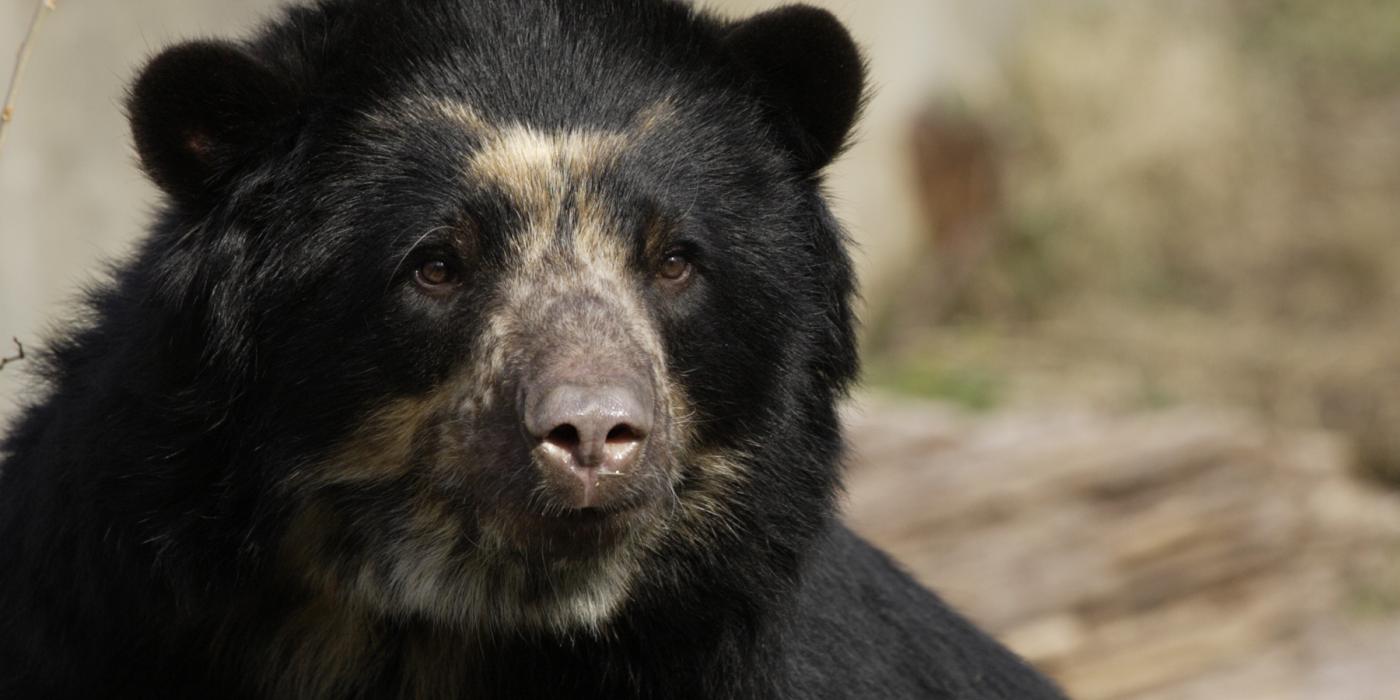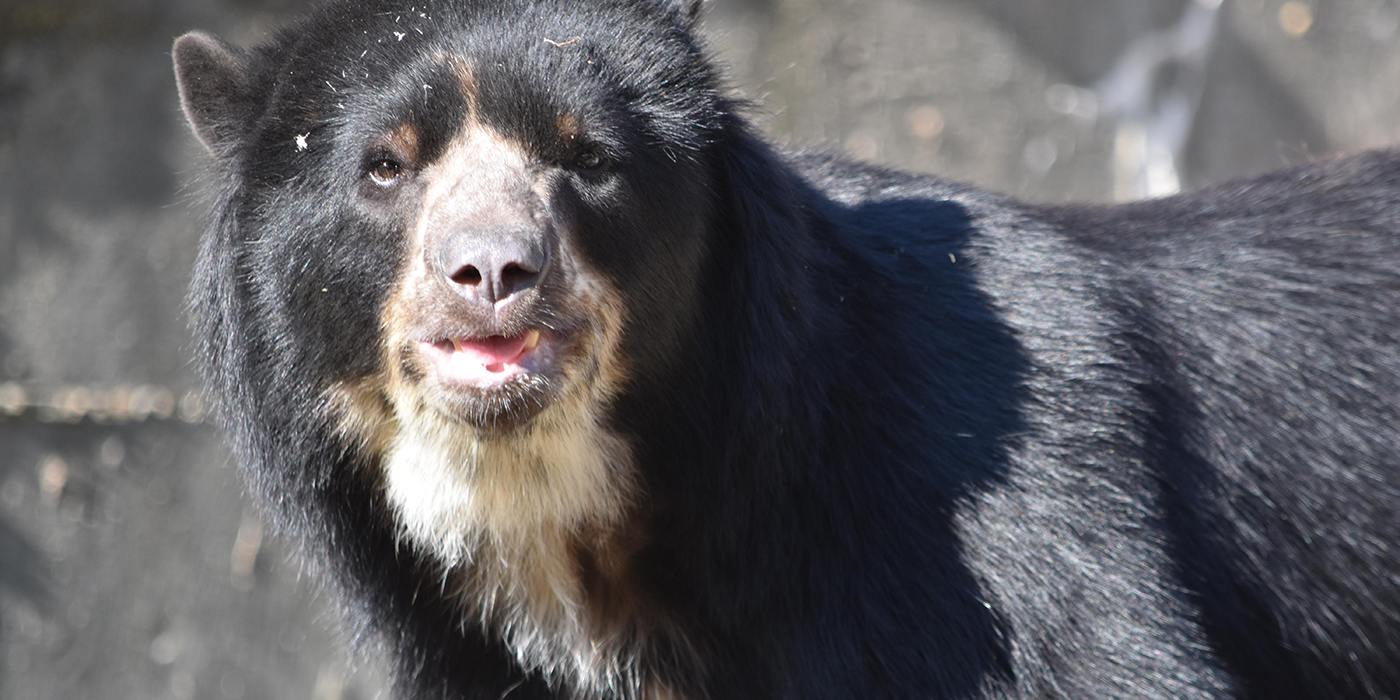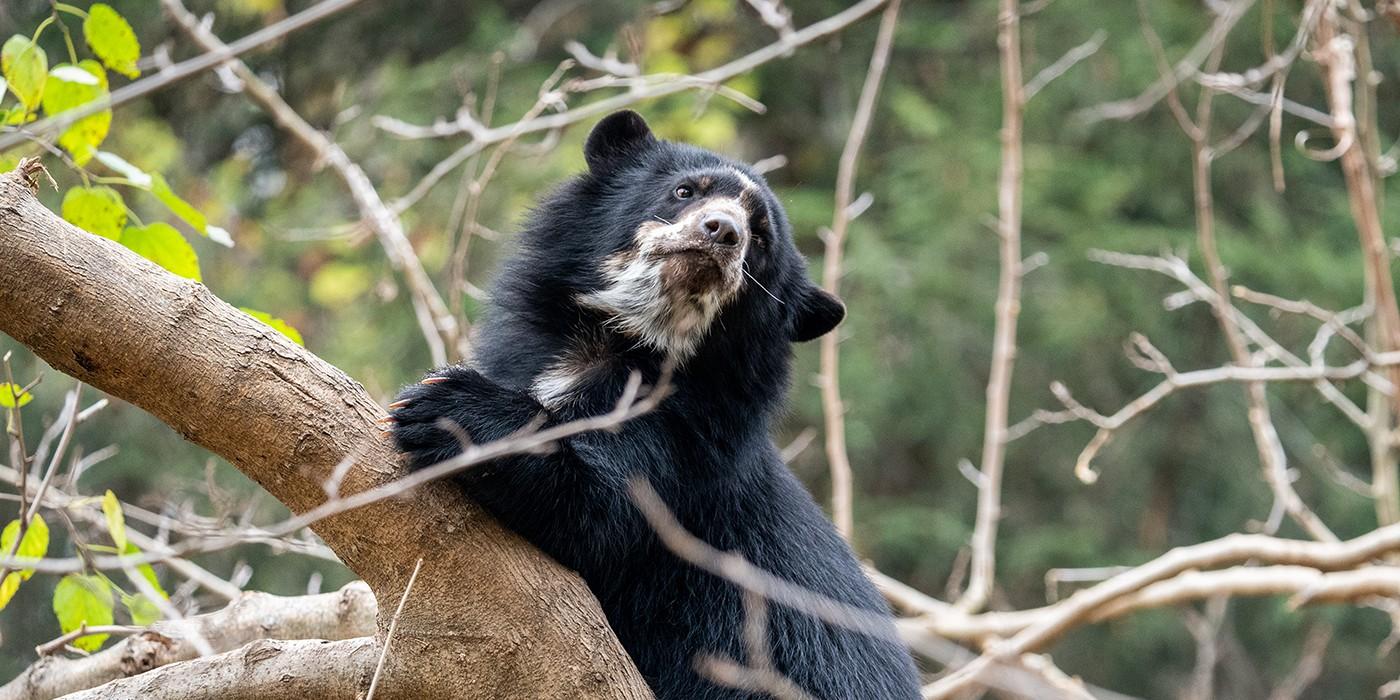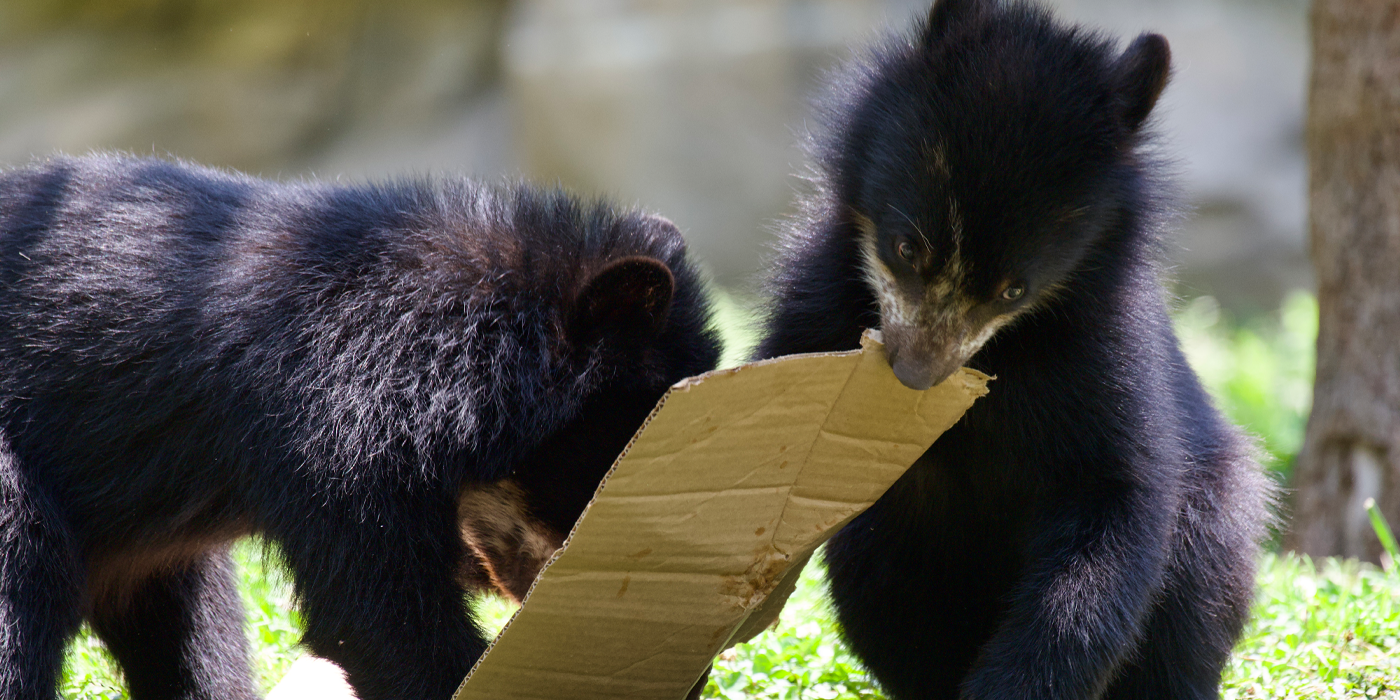New at the Zoo: Meet Andean Bear Quito
Next week, 4-year-old male Andean bear Quito will make his debut at the Smithsonian’s National Zoo! Get the scoop on the new guy in town from animal keeper Sara Colandrea and assistant curator Leigh Pitsko.
Why did Quito come to the Zoo?
“Quito comes to us from Zoo Duisburg in Germany. His genes are not represented in the North American Andean bear population, so he will be a great match for Billie Jean! We will begin introducing them in the spring. Initially, they will be able to see each other across the yards outside and see each other inside via mesh howdy doors. If all goes well, we will give them an opportunity to meet face-to-face and hopefully breed!”—Sara Colandrea
What is your favorite fact about this species?
“Andean bears are masters at building nests in trees! They will bend branches such that they look like giants birds’ nests in the canopy. These nests are perfect for napping and serve as a platform for picking fruit off flowering trees. Billie Jean, our 11-year-old female, is very good at making nests in our outdoor habitats. Bouba, our 6-year-old male, is very good at inadvertently destroying them. At 374 pounds, he is a big boy! Billie Jean is a comparatively petite 187 pounds. Quito weighs around 225 pounds, but he is still growing.”– Sara Colandrea, animal keeper
What is Quito’s personality like?
“Quito has an endearing personality and is eager to interact with his keepers. Whereas Billie Jean and Bouba vocalize to one another frequently, Quito is on the quieter side and entertains himself by playing with his enrichment toys.”—Leigh Pitsko, assistant curator
What does a typical Andean bear day look like?
“Like all bears, Andean bears are very intelligent. It can be a challenge to keep them entertained! We want to encourage them to explore their habitats, so we will place tires, kegs and boomer balls around the yards for them to pick up, play with and toss around. Puzzle feeders are another favorite of the bears; we fill them with pieces of fruit, vegetables, fish and nuts. They have to shake, roll and knock the toys around to get the treats out.” – Sara Colandrea, animal keeper
“The bears get excited when we give them cardboard boxes, which are fun for the bears to open and tear up. Sometimes, we stuff the boxes with fresh hay. They use it to build nests (along with branches). Right now, Quito’s favorite enrichment items are whole coconuts. He carries them around and then throws them on the ground over and over again until they break.” –Leigh Pitsko, assistant curator
What do you feed the bears?
“The bears get a variety of fruits, including apples, pears, mangoes, papayas and melons. We also offer sweet potatoes and root vegetables. Hardboiled eggs, frozen-thawed fish and nuts are a staple of the bears’ diets as well. Quito’s favorite vegetables are carrots. He seems to like all ripe, juicy fruits equally.”—Leigh Pitsko, assistant curator
Why study Andean bears?
“These bears are very hard to study in the wild. They are the only bear native to South America, and they live in the Andes mountain range in Peru, Venezuela, and Bolivia, among other countries. The majority of what we know about Andean bears comes from zoos like ours that study Andean bear behavior, health and reproduction. The zoo community is making an effort to learn more about these elusive bears, which is important since the International Union for Conservation of Nature considers them vulnerable to extinction.”—Sara Colandrea
What is the best time to view the animals?
“Zoo visitors who are interested in learning more about Andean bears can stop by the exhibit anytime between 9 a.m. to 2 p.m. Keepers love talking about Billie Jean, Bouba and Quito, so we invite you to come by and learn more about them!”—Sara Colandrea
This story appears in the December 2017 issue of National Zoo News. Stop by the Andean bear exhibit—adjacent to Amazonia and American Trail—to see Quito, Bouba and Billie Jean explore their habitats! Enrichment allows animals to demonstrate their species-typical behavior, gives them opportunity to exercise control or choice over their environment and enhances their well-being. Donate to support Animal Enrichment.
Related Species:

